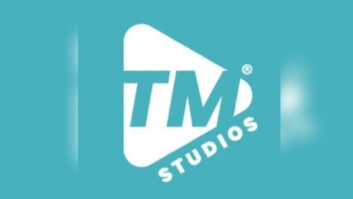
Eric Wiler is senior vice president, technology and operations at Westwood One. This interview is part of Radio World’s current series about the C-Band migration process including radio station reimbursement.
Westwood One provides syndicated content to 250 million monthly listeners via an audio network of 8,000 affiliated radio stations and media partners. The company, owned by Cumulus Media, describes itself as the largest audio network in America.
Radio World: In the typical relationship between Westwood One and a radio station affiliate, who owns the dish and feedhorn?
Eric Wiler: Since satellite has been employed by the major networks, it has been the typical standard that the network provides the downlink receivers and the station installs the dish, feedhorn, LNB, cables and splitters.
RW: We’ve reported on the process set up by the FCC for reimbursing qualified radio stations for modifying C-Band satellite dishes as part of the midband repack. As a radio syndicator with many affiliates, how does Westwood One fit into this process; what role are you playing?
Wiler: We’ve provided recommendations to our affiliates, acting as a conduit for our satellite provider SES, to disseminate information to radio stations. These recommendations included regular communication asking the stations register their C-Band downlink antennas with the commission.
RW: What role are the satellite companies playing? I understand SES and Intelsat are the major players.

Wiler: SES and Intelsat have dedicated extensive resources to their programming providers such as Westwood One to ensure we maintain our ability to continue distribution with the same high level of reliability stations have come to expect with C-Band. They have played an extremely active role in the engineering of a “shared universe” between satellite and terrestrial utilization of the 3700-4200 MHz band.
RW: A key question confronting many radio stations is whether to take the “lump sum” that’s been established by the FCC process, which we’re told is about $9,000 or $17,000 for a typical radio station. How are you advising radio stations on this decision?
Wiler: Westwood One is a programming provider. While we provided the recommendation to follow the FCC guidelines to register all downlinks, the review and acceptance of the terms placed on the downlinks by the “lump sum” is something that should be carefully considered for each situation. As we cannot be clear on the individual dynamics of every business, the lump sum decision must be made by each owner individually.
[Related: “How the C-Band Repack Affects Public Radio”]
RW: If stations take the lump sum, what is their responsibility?
Wiler: My understanding of the public notice is that by accepting the cash distribution, you are agreeing to mitigate the impact of terrestrial utilization of the C-Band to your downlink, while certain video feeds are transitioning to fiber or terrestrial circuits. By electing to receive the lump sum you’re accepting the responsibility for undertaking the necessary transition actions in accordance with the satellite operators timelines. This could be as simple as adding a filter between the LNB and the feedhorn, but this is not a certainty. C-Band is extremely reliable thus the preference over internet or other public terrestrial backup systems.
RW: If stations do NOT take the lump sum, what is their responsibility?
Wiler: Westwood One’s satellite provider is SES. It will be responsible for the transition of your downlink. Their plan is to conduct pre-installation visual site surveys to assess the individual needs. This means when their installer shows up (provided by SES) they will have the additional equipment should something unexpected happened. This option may be best for stations with extremely limited technical resources.
RW: Hardware provider DAWNco told us they’ve been getting a lot of questions, and that one radio station reported being advised by a Westwood One representative “to do nothing” and that this station thus would be entitled to two free filters but would be leaving available money on the table. Is that an accurate summary of Westwood One’s advice?
Wiler: As I noted earlier, as a program provider Westwood One is not really the appropriate authority to provide the ultimate guidance in every situation. SES has indicated to us as their customer if the station doesn’t elect to receive the lump sum, they will provide filters and assistance in maintaining the downlink’s ability to receive programming. If the stations agree to take on the responsibility for technical mitigation, they may receive compensation. Obviously the “lump sum” is much greater than the cost of two filters, but may be less than the total mitigation expense.
RW: Are you hearing from many stations that missed the earlier registration process and thus are apparently locked out of reimbursement?
Wiler: Overall, we’ve heard from a few stations who didn’t register, but the overwhelming majority of stations complied with the initial request.
RW: What other questions have you been asked by affiliates, and how are you answering?
Wiler: The biggest question has been timing. Filters must be installed by December 2021 for the largest 46 PEAs (markets). The rest of the nation has until December 2023 to mitigate C-Band terrestrial signals.
RW: Anything else we should know?
Wiler: This is a highly complex issue with legal, technical and financial implications. There is a lot of information coming at stations as well as the networks and we’re all on the same side, to maintain the continuity of our programming. By using all available resources the answer for your individual station’s situation should be clear.
[Read more of Radio World’s coverage of this issue.]












